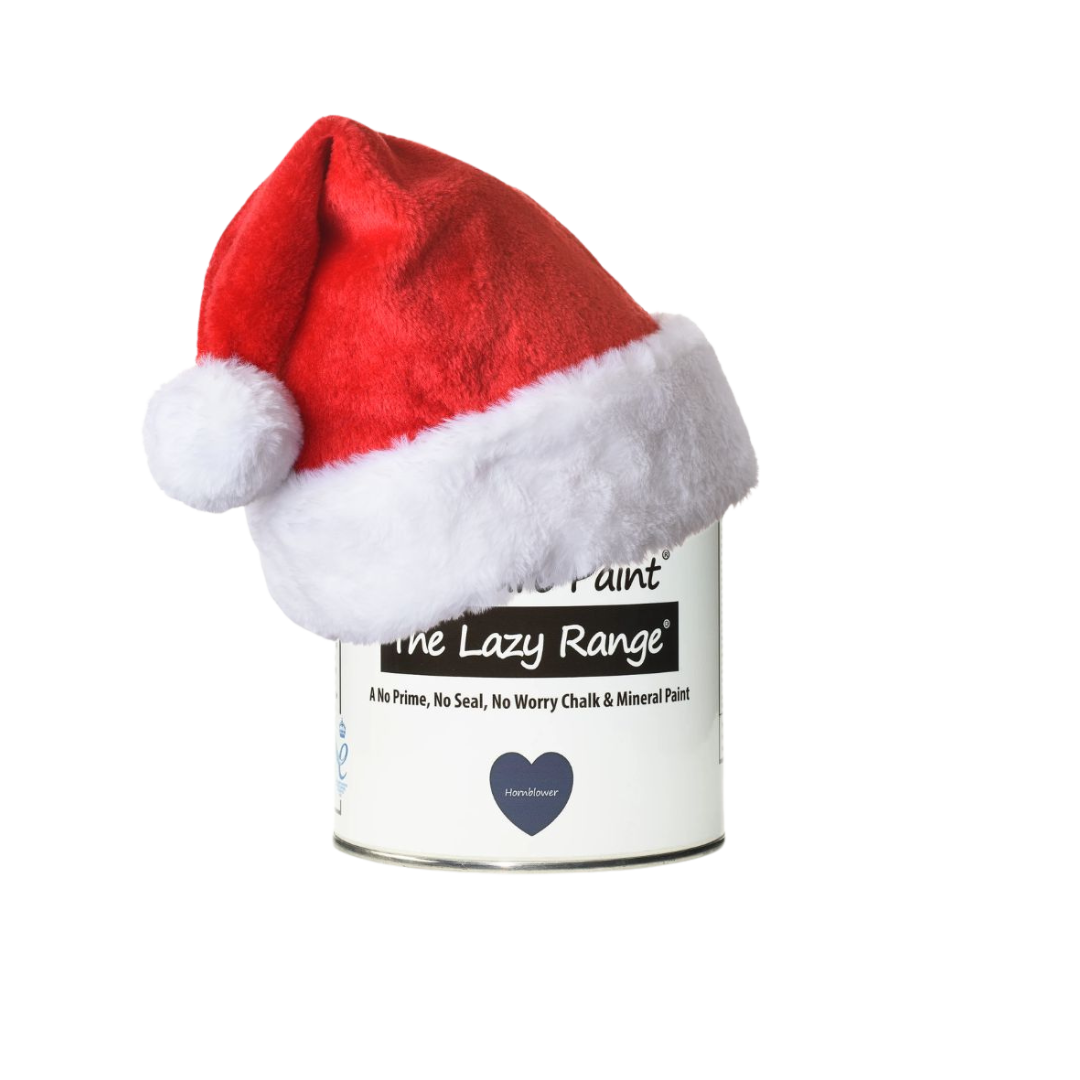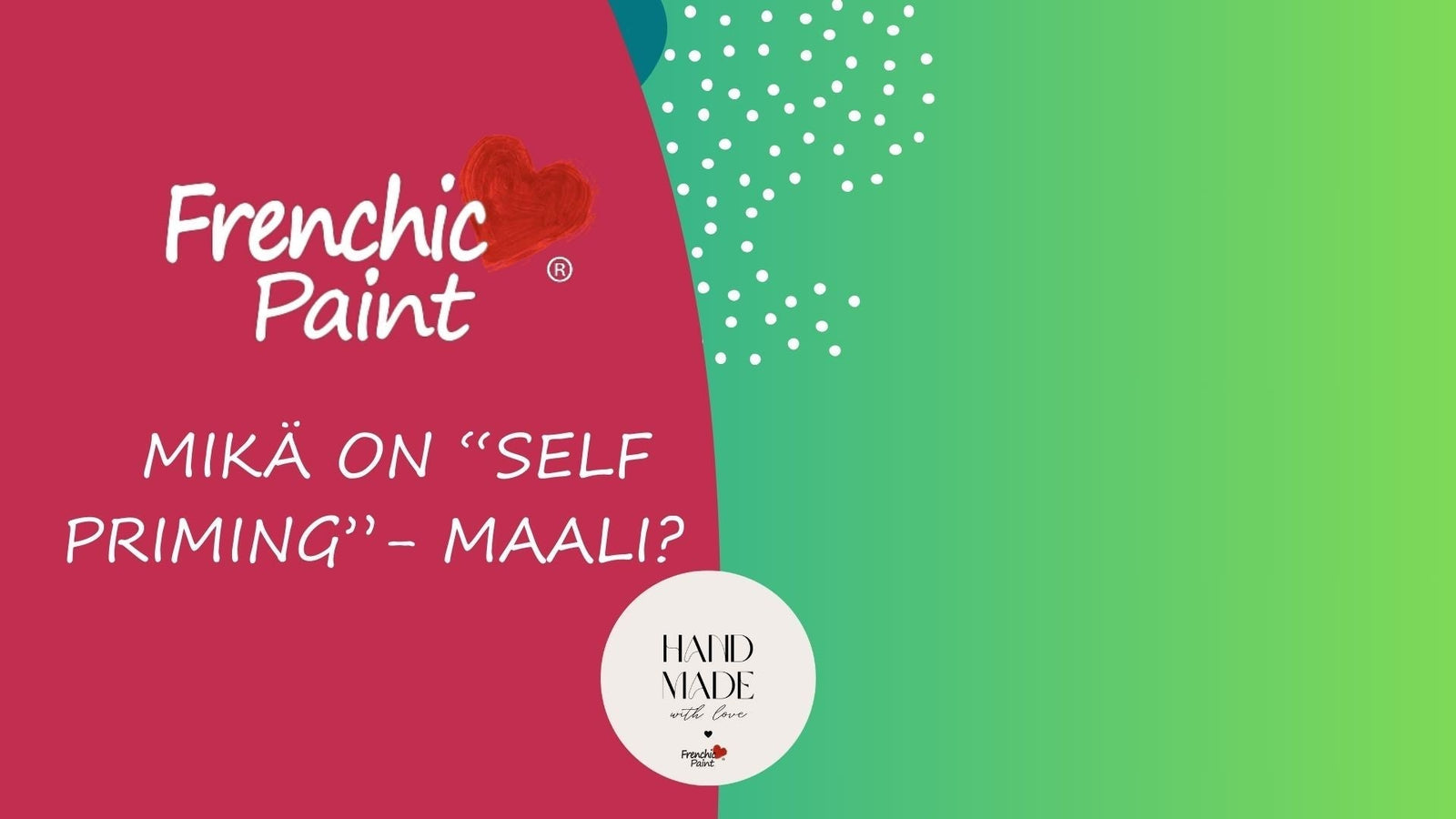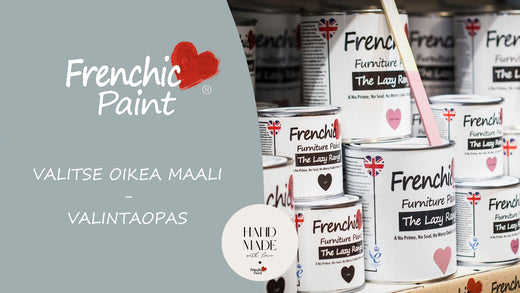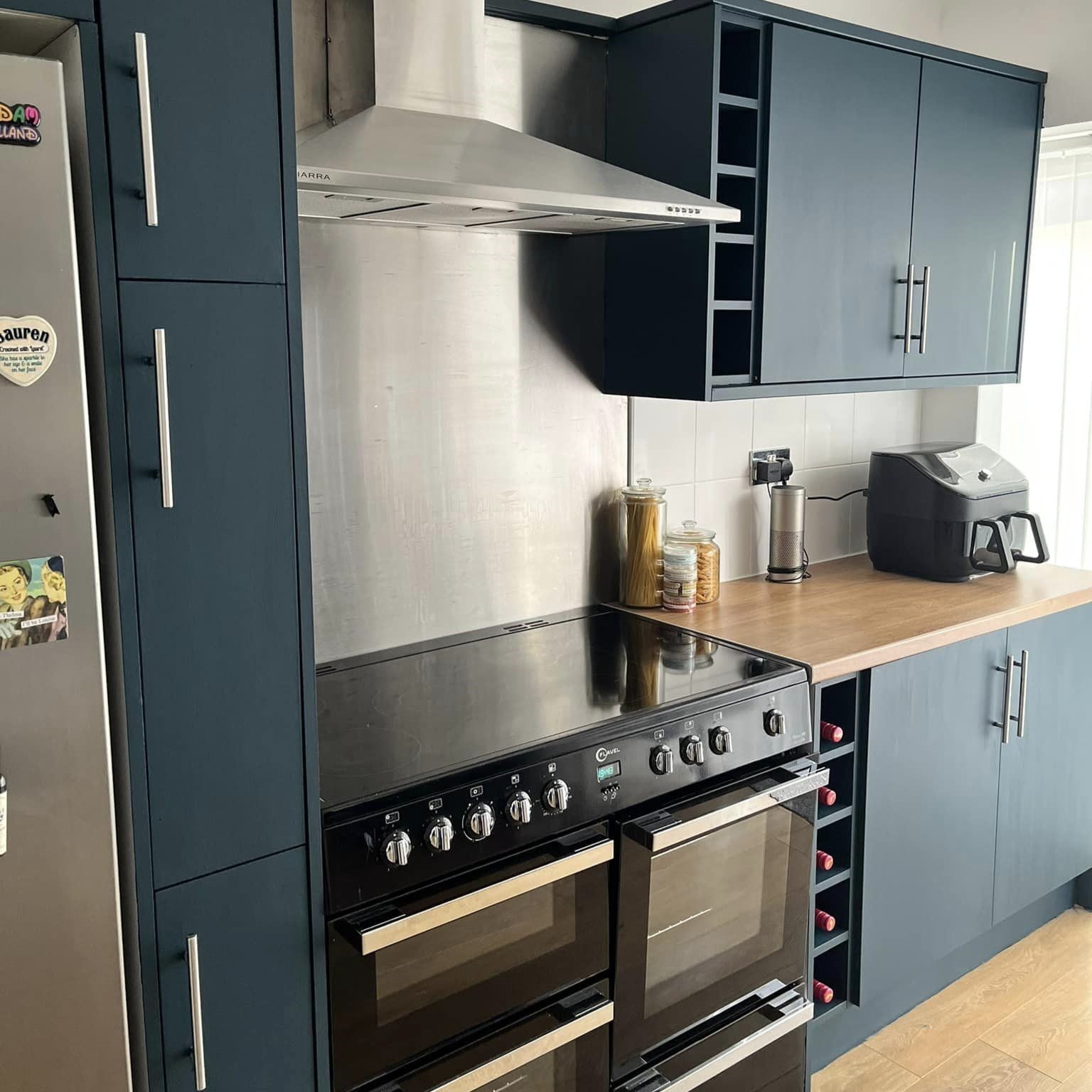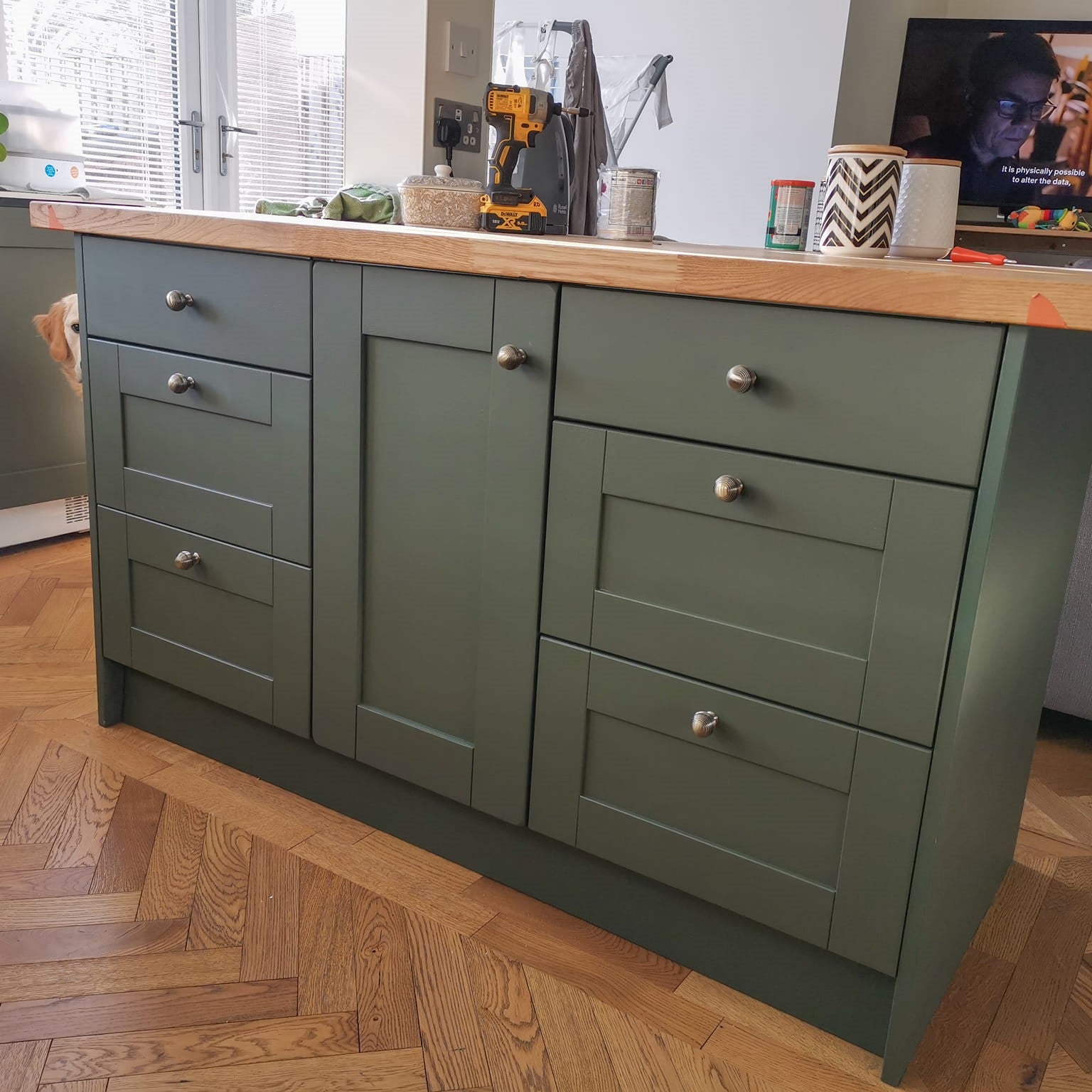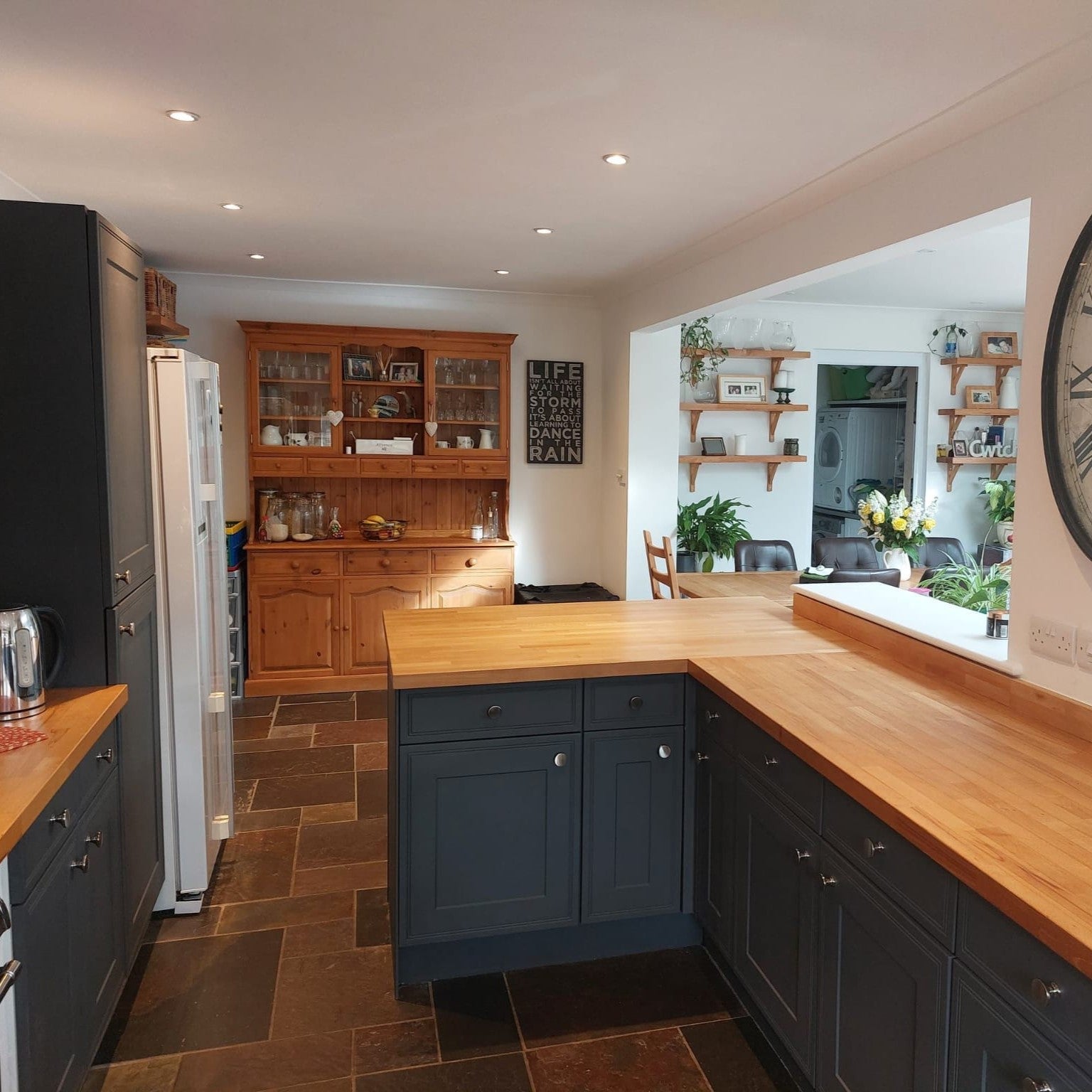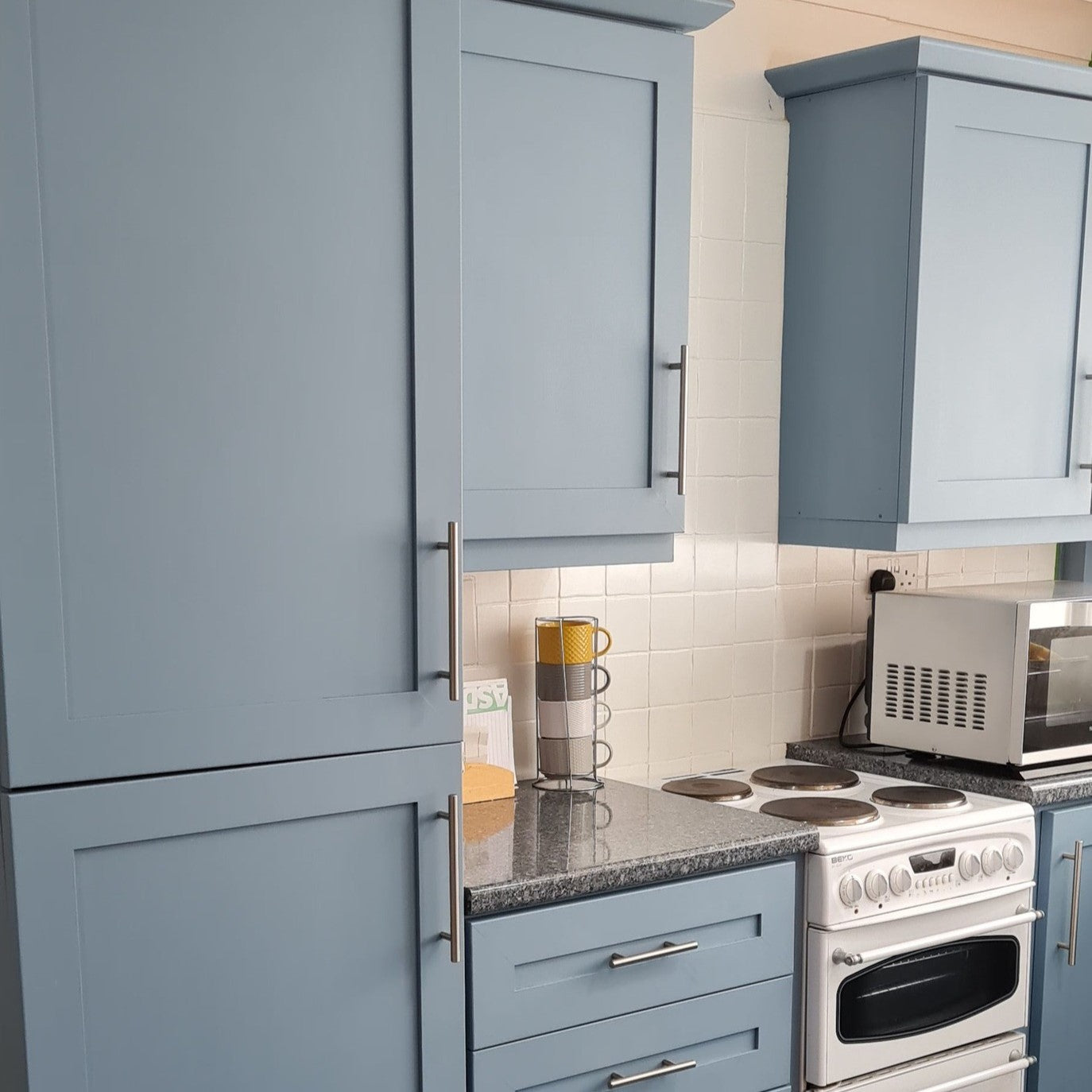What is 'Self Priming' paint and does it really work?
The smart Frenchic paints are quickly becoming the most popular choice for home painters and DIY builders who want to shorten the time and effort spent repainting their favorite furniture.
However, with so many paint options on the market, is Frenchic really what it promises to be?
Frenchic is made in England, which has a long tradition and expertise in the production of paints and wallpapers. Frenchic paints combine traditional expertise with completely new innovations not seen in other paint ranges.
Frenchic has been awarded numerous different prizes and mentions for these innovations.
You can read more about them here.
Self Levelling - Frenchic paints level beautifully into a smooth surface with almost or completely no brush marks. Yes!
Self Levelling - leveling is a feature of Frenchic paints praised by our customers that amazes even experienced painters.
To achieve the leveling property, it is advisable to follow our instructions:
- The paint must be stirred thoroughly down to the bottom before starting to achieve a velvety creamy and thick consistency. Frenchic paints do not need thinning; in fact, excessive thinning and brush painting can even remove this wonderful property!
-
When painting, there should be 'normal' amounts of paint. So don't skimp on the paint. For the leveling property to work, there must be something to level out—too thin coats dry instantly and don't have time to level. The drip-free Frenchic paint offers a wonderful painting experience.
-
It is advisable to follow the drying time of the coat. It varies per series, so check the side of the can if you forget. For example, in the Lazy Range series, the drying time per coat is 1 hour, and in the Al Fresco series, it is 2 hours. This is the time during which leveling occurs.
-
Self Priming - no need for primers.
-
Self Sealing - no need for varnish or wax.
Read more and explore the benefits of Self Priming paint and tips for using it in your own projects.
What is Self Priming paint?
Self Priming paint is primarily designed to eliminate the need for primer.
It is typically thicker than regular paint and has a higher solids content, which helps cover imperfections, leaves a more durable surface, and ultimately makes the process faster and easier.
Primer can also be mixed into paint to create a two-in-one product that prepares and colors the surface at the same time.
What is the purpose of priming?
There are several reasons why a surface should be primed before painting. Priming smooths rough surfaces and thus improves the finish of the paint job.
It also helps the paint adhere to surfaces that do not accept paint well, such as metal and porous surfaces like raw wood, where the grain and knot variations cause the paint to absorb at different rates.
Primer can also be used to seal surfaces to prevent underlying fillers, liquids, grease marks, or glue and paste stains from bleeding through the new paint layer and ruining the finished appearance. For example, new and untreated drywall should be primed before the topcoat.
Some primers are intended only to increase adhesion and may not necessarily act as a barrier against unknown impurities.
Benefits of Self Priming paint: easy and fast
If you are an experienced DIY builder, you know that finishing always takes longer than you initially planned.
Surface preparation, waiting for each coat to dry before moving on to the next - finishing work is not a quick task.
The main advantage of Self Priming paint is that it shortens the duration of the painting process.
Unlike traditional paints that first require a primer, which takes 24 hours to dry, Self Priming paint reduces the number of painting layers.
Also note the quick drying time between coats of Frenchic paints, which varies between 1-4 hours depending on the range.
Although some professional decorators prefer a separate primer + paint, in most recycling projects and home repainting jobs, there really is no need for that.
All Frenchic paints glide easily onto surfaces and adhere to furniture without needing a primer beforehand. Thanks to their composition, they also help smooth rough surfaces and cover small imperfections.
You also don't have to worry about old paint bleeding through, as our paints' properties act as a barrier to liquids and slow down, for example, sap bleed-through and staining.
Frenchic paints are even washable, so accidental splashes won't ruin your decor.
If you choose our wall paint, Trim Paint, Lazy Range - or Al Fresco products, you save even more work, time, and money, as they also do not require separate priming!
Self Priming paints are especially good for painters who just want to open the paint can, dip the brush, and start.
As with all Frenchic paint products, they do not need thinning; you can paint directly from the can - Start by stirring the paint thoroughly to get all the pigment into use. Even better, since the paint is thicker than average, you can cover darker areas with just a couple of coats.
How to use our Self Priming paint
All Frenchic's non-toxic paints are both Self Priming and self-leveling, Self Levelling, ensuring a professional finish and making your painting projects easier.
If you are a complete beginner or have never used our products before, we have compiled useful tips and tricks to help you get started with your latest project. Start experimenting with the award-winning Lazy Range series.
What about the exceptions? When is it good to prime or seal the surface before painting?
Since there are countless projects, there are also exceptions. Although this article mainly deals with furniture painting, we also address painting other surfaces.
-
Metal paintingFor painting bare metal, it is advisable to use a suitable rust inhibitor. None of the Frenchic series paints contain toxic rust inhibitors.
- Heavily knotted wood surfaceNatural staining cannot always be avoided, but you can slow down the staining. Note that not all primers on the market are intended to prevent bleed-through or other impurities. You can slow down staining and knot bleed-through by sealing the surface before painting with Finishing Coat.
- Porous surfacePorous surfaces, such as bare MDF board, new and untreated drywall, or clean new wood surface: do not need priming for adhesion, but it is recommended to seal it before painting with Finishing Coat to save topcoat layers. Larger wall areas should be primed either with thinned topcoat or regular primer.
- Large color differencesWhen painting, for example, a reddish or orange surface – or from black to white – you don't need a primer for adhesion but to neutralize the base tone. Choose a light gray shade to tone down the color difference, such as Swanky Pants or City Slicker shade. This way, you can achieve fewer topcoat layers.
- Blocking various impuritiesThe walls of a renovation site can be full of paste, glue, and filler materials that may react with the topcoat. The purpose of priming in this case is to isolate impurities from the topcoat. Some primers are intended only to increase adhesion and may not necessarily act as a barrier against unknown impurities. We always recommend testing the compatibility of the products used in the project before a larger project.
1. Preparation
Although the surface to be painted does not need priming, it must be cleaned.
As with any painting project, you want to ensure the surface is in the best possible condition before painting. This means removing any residues such as grease and other dirt, as they can form a barrier to the paint.
Dilute Sugar Soap detergent in warm water and clean the surface to be painted from grease and other dirt with a cloth or sponge.
Once the surface has dried, it should be lightly sanded/scuffed to help the paint adhere better.
Use coarser sandpaper on surfaces that have been previously coated or treated. Make sure to wipe off dust with a lint-free cloth before painting. Paint only clean and dry surfaces.
2. Painting
The beauty of Self Priming paint is that once the surface is pre-treated, you can paint your chosen color directly onto the surface.
You can do this with a brush or, if you want to cover large areas faster, all our paints can be used with a manual paint sprayer.
For the best result, apply the first coat and wait at least two hours before applying the second coat.
The second coat ensures even coverage and a durable surface, but always check if the paint you choose requires a topcoat.
All Frenchic paints are paintable at least twice.
Careful mixing of the paint before starting affects both coverage and durability.
Are you ready to get started?
If a tedious painting process is stopping you from starting your next project, you are in the right place.
Frenchic's intelligently designed Self Priming paint helps you get the job done much faster and possibly much cheaper, because you don't need as many products.
Explore our full range of easy-to-use, child-safe paints for furniture online or find a retailer near you. More DIY tips and advice can be found in Frenchic Videos, which feature step-by-step tutorials.
